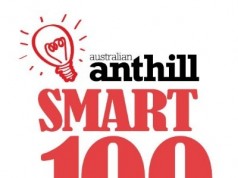Show your support for this innovation. Tweet it. Like it on Facebook. Leave a comment.
The following SMART 100 profile and the information it contains is a duplication of content submitted by the applicant during the entry process. As a function of entry, applicants were required to declare that all details are factually correct, do not infringe on another’s intellectual property and are not unlawful, threatening, defamatory, invasive of privacy, obscene, or otherwise objectionable. Some profiles have been edited for reasons of space and clarity. More about the SMART 100.
Microcell Arrays (VIC)
This innovation initially came to life when…
We realised that we could not track the position of certain types of biological cells for more then one hour without losing sight of them under the microscope. The research that was being conducted relied on infecting a specific cell then waiting for 3-5 days to see if the cell was infected, died, divided or nothing happened. In the end there could be no direct correlation between how many cells we infected and the outcome five days later, except for the development of assumptions and statistical probabilities.
WHAT & HOW
The purpose of this innovation is to…
Allows the cells to be placed under a microscope multiple times over multiple days and you know exactly which cells you are tracking without having to rely on assumptions and statistics.
It does this by…
Confining the cells, like a farm paddock confines how far animals can roam. As the design incorporates multiple arrays, or paddocks, a significant number of highly precise tracking results can be obtained from the one experiment.
PURPOSE & BENEFITS
This innovation improves on what came before because…
Now large populations of cells can be continuously monitored at the single-cell level over multiple generations — the “Big Brother” of the biological cell world. This was achieved in a simple self-adherent plastic insert that does not require any procedural modifications to the research.
Its various benefits to the customer/end-user include…
The ability to see the effects of external chemical, pathological or environmental signals on the target cell but also on the following generations of cells in a continuous live cell environment.
COMPETITIVE LANDSCAPE
In the past, this problem was solved by…
Fixing, or “freezing” the cells in time, at certain times after the inclusion of the external signal. This requires the experiment to be repeated many times with different batches of cells to produce a “time course” of the effects of the signal with statistical analysis used to correlate the results.
Its predecessors/competitors include…
Traditional plastic and glass cell culture ware which has not evolved in the last decade. Cell culture ware was designed for culturing large populations of cells rather than as a screening or investigative platform.
TARGET MARKET
It is made for…
Biologists interested in studying the effects on live cells from external signals in a continuously monitored environment. This has applications in cancer research, molecular biology, stem cells, drug discovery and high content screening. The global market for high content screening platforms is predicted to reach $5.86 billion in 2012 and grow at a rate of 22% per year. This market includes academic researchers and industry based R&D and manufacturing.
DISTRIBUTION STRATEGY
It is available for sale through…
The company website, www.microsurfaces.com.au.
Our marketing strategy is to…
Grow the sales and brand of the product through collaborative interactions with the customers to ensure the highest-quality results are achieved and promoted. This will be a result of direct contact with identified potential customers and promotion at industry and academic conferences.
SUPPORTING IMAGES
SHARE THE LOVE
You can show your support for this outstanding Australian innovation in three ways:
- Tweet it: Top left of each page
- Trigger a Reaction: Facebook ‘Like’, etc.
- Leave a Comment: Anonymous comments excluded.
More about the READERS’ CHOICE INDEX.





![Learn how to devise winning business ideas in four steps with Martin Martinez [CHEAT SHEET]](https://anthillonline.com/wp-content/uploads/2015/07/Screen-Shot-2015-11-26-at-13.44.27-300x194.png)
![How to price your product or service in 8 steps with Steve Major [FREE INFOGRAPHIC]](https://anthillonline.com/wp-content/uploads/2015/07/Screen-Shot-2015-11-26-at-11.40.10-100x75.png)
![Four principles to creating dedicated customers…or zombie loyalists with Peter Shankman [Free report]](https://anthillonline.com/wp-content/uploads/2015/11/Screen-Shot-2015-11-26-at-11.16.26-100x75.png)
![Need cash for your startup or innovation? Here’s the Ultimate Grant Guide for Innovators and Startups [FREE DOWNLOAD]](https://anthillonline.com/wp-content/uploads/2015/10/INNOVATORS-GRANT-GUIDE-NFSU-page-spread-100x75.png)
![How to confidently raise venture capital… with Jack Delosa [CHEAT SHEET]](https://anthillonline.com/wp-content/uploads/2016/04/jack-de-losa-confidently-raising-venture-NFSU-rebrand-01.pdf-Box-2016-04-19-12-37-42-100x75.png)
![How to pitch sales and marketing ideas to your boss with James Tuckerman [FREE REPORT]](https://anthillonline.com/wp-content/uploads/2015/07/Render-3-100x75.png)
![Model, actress and multi-millionaire entrepreneur: Jessica Alba interview [VIDEO]](https://anthillonline.com/wp-content/uploads/2014/11/HonestCo-300x350.jpg)
![Watch as chocolate is created out of nothing! [VIDEO]](https://anthillonline.com/wp-content/uploads/2015/02/magicchocolate-300x350.jpg)

![Audi takes aim at the millennial market with its latest parody ad [VIDEO]](https://anthillonline.com/wp-content/uploads/2014/01/AudiShame-300x350.jpg)
![How to pitch sales and marketing ideas to your boss with James Tuckerman [FREE REPORT]](https://anthillonline.com/wp-content/uploads/2015/07/Render-3-300x194.png)
![THE ULTIMATE CASHFLOW CHECKLIST [FREE DOWNLOAD]](https://anthillonline.com/wp-content/uploads/2016/06/james-Seven-simple-strategies-to-cut-costs-04.pdf-Box-2016-06-30-13-49-35-100x75.png)
![Five ways to manage your time by managing yourself, with Helen Ebdon [CHEAT SHEET]](https://anthillonline.com/wp-content/uploads/2015/07/ebdon-3d-cover-01--100x75.png)
![Three easy wins when using LinkedIn with David Hobson [FREE REPORT]](https://anthillonline.com/wp-content/uploads/2015/08/3quick-wins-100x75.png)
![The Gaddie Pitch in three simple sentences with Antony Gaddie and James Tuckerman [CHEAT SHEET]](https://anthillonline.com/wp-content/uploads/2015/08/GADDIE-PITCH-updated-3D-cover--100x75.png)
![New Zealand’s Xero eyes US IPO, further disruption as subscribers increase [INFOGRAPHIC]](https://anthillonline.com/wp-content/uploads/2014/07/sruuuuujana-212x194.png)
![Ever wonder if your ‘content marketing’ is really just crap? You gotta see this! [INFOGRAPHIC]](https://anthillonline.com/wp-content/uploads/2014/08/content-100x75.jpg)
![7 Business Lessons From Game of Thrones [INFOGRAPHIC]](https://anthillonline.com/wp-content/uploads/2014/10/infographic-games-of-thrones-041-100x75.jpg)
![How to build your own Media Empire… In seven steps with Nathan Chan [INFOGRAPHIC]](https://anthillonline.com/wp-content/uploads/2014/10/Nathan-Chan-Infographic-e1413419529176-100x75.jpg)
![5 Business Lessons From Tinder [INFOGRAPHIC]](https://anthillonline.com/wp-content/uploads/2014/10/Tinder-Elegant-Infographic-100x75.jpg)



